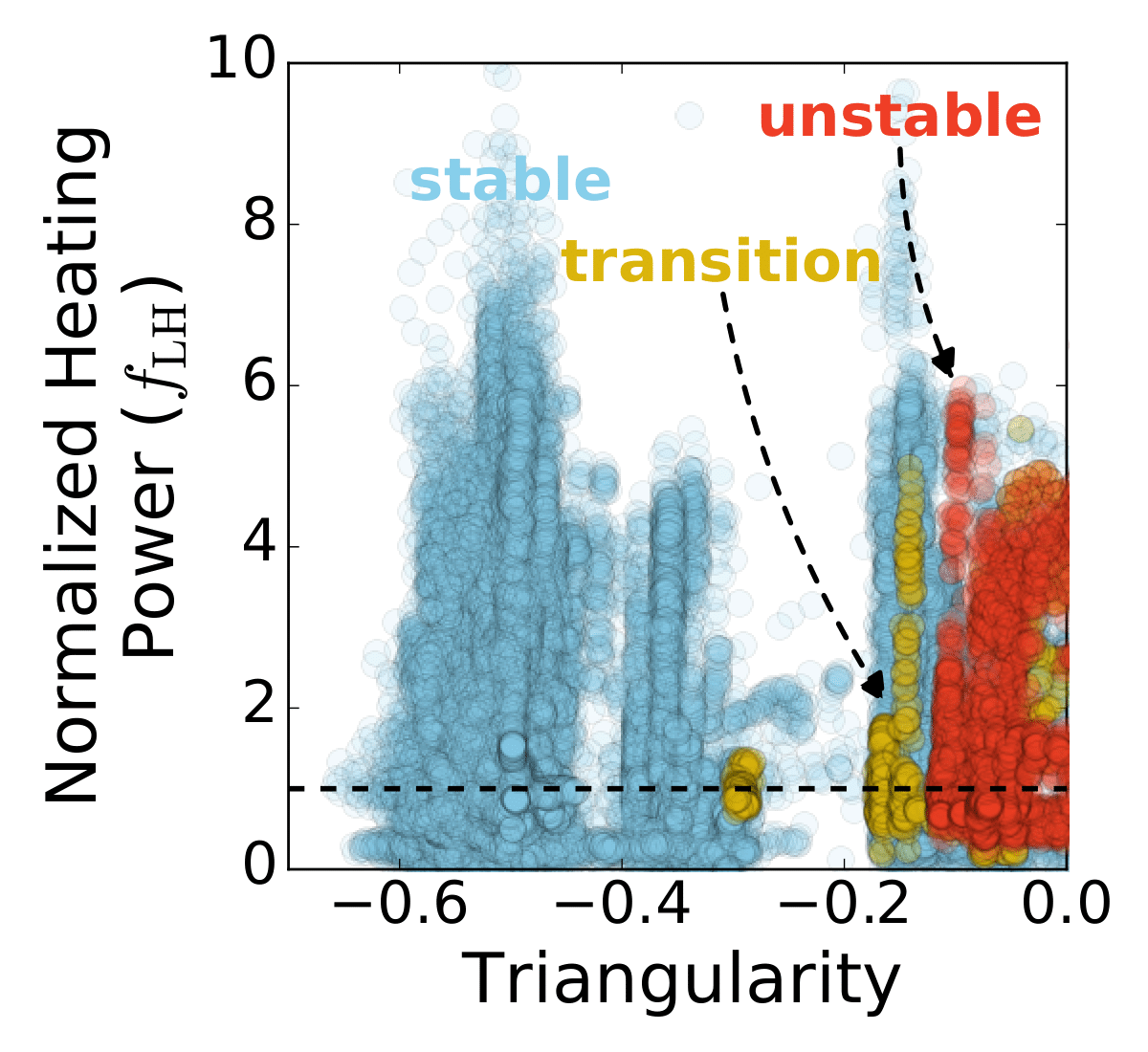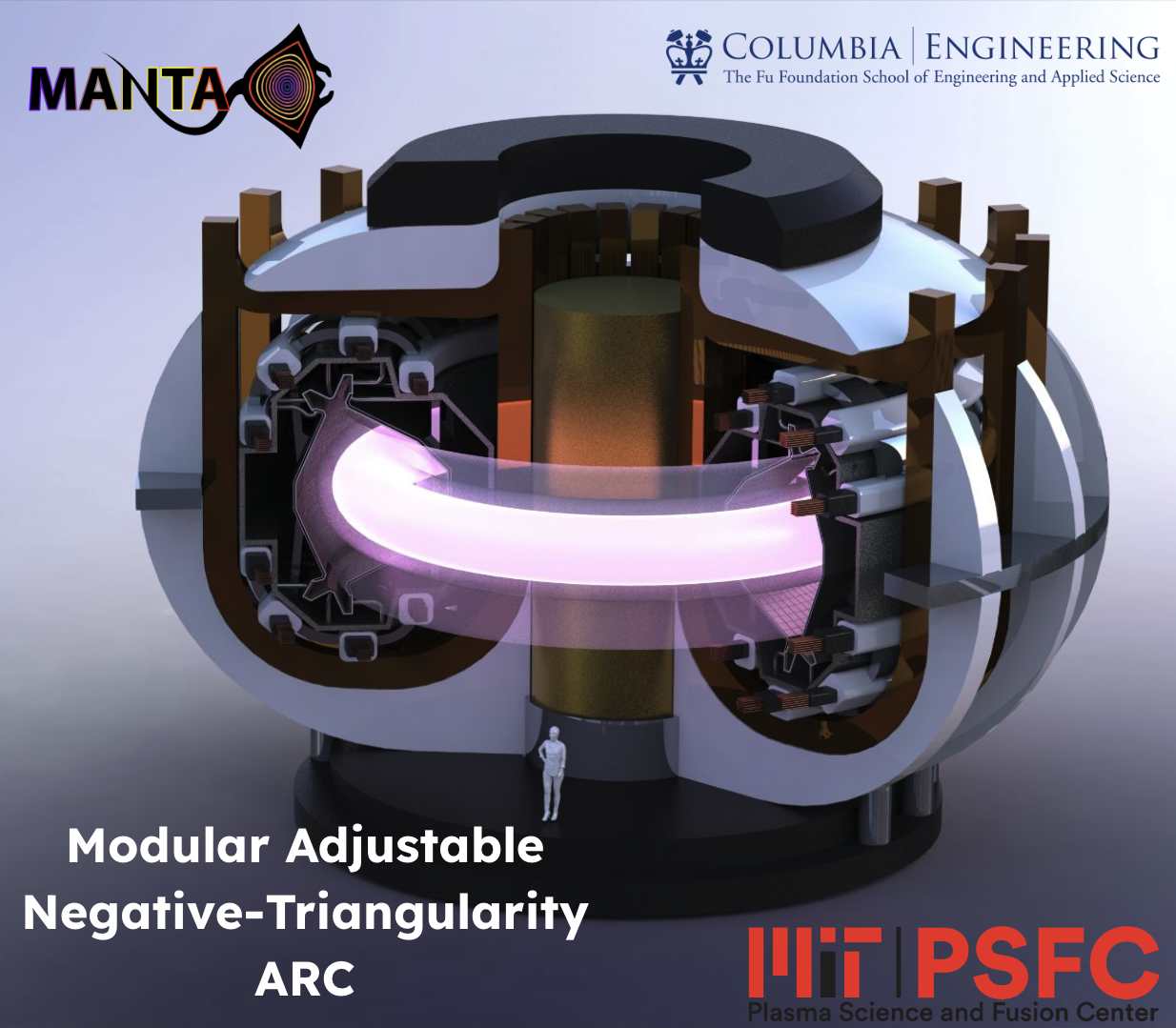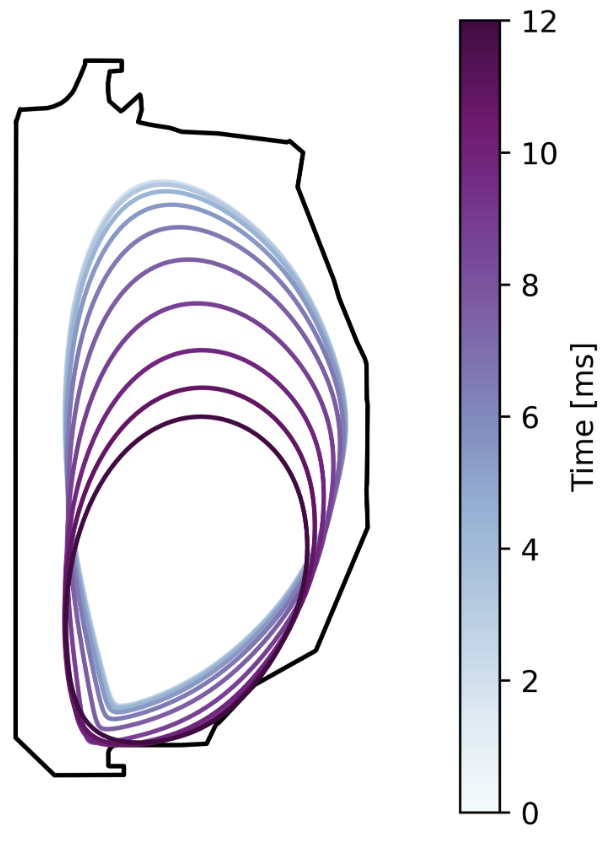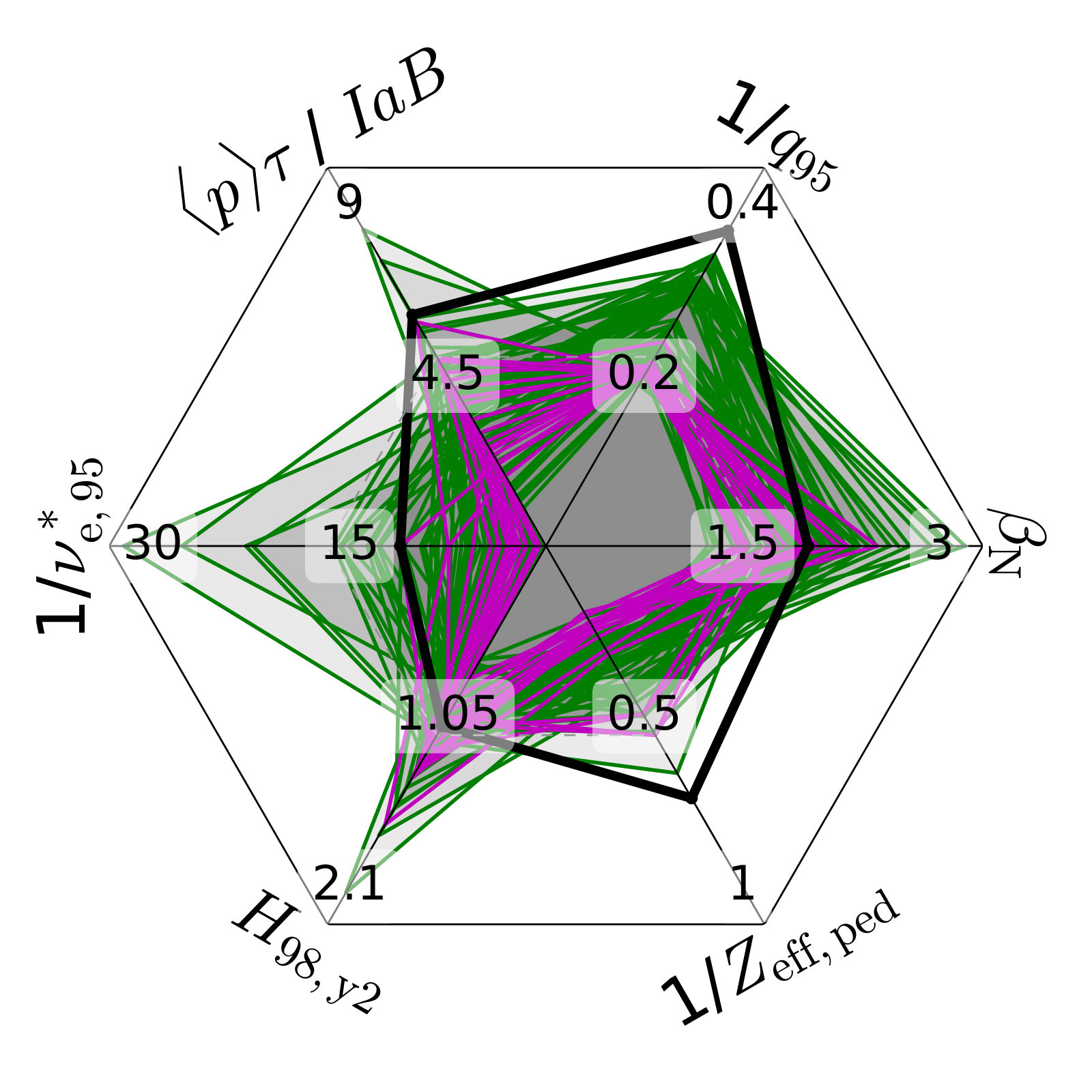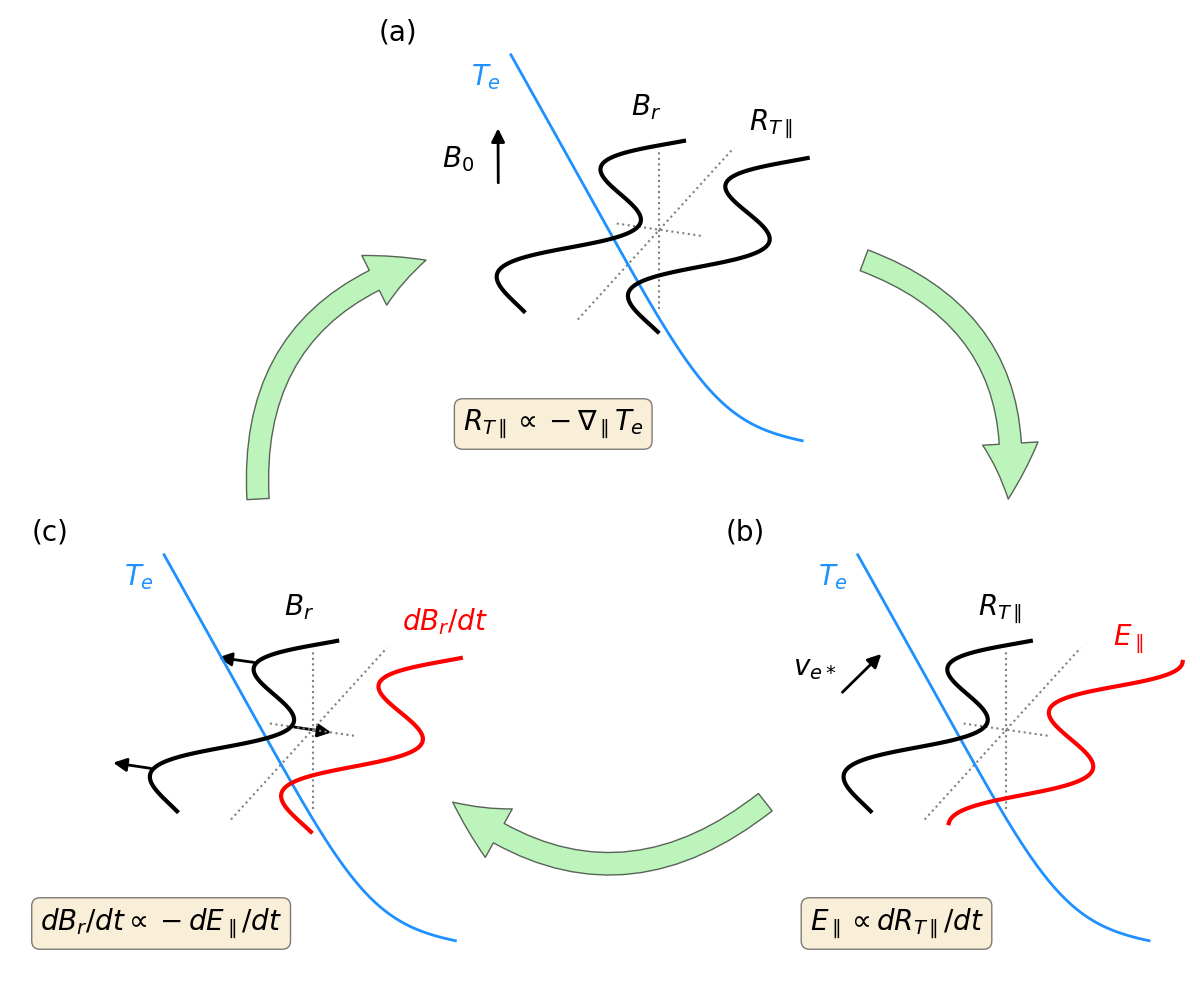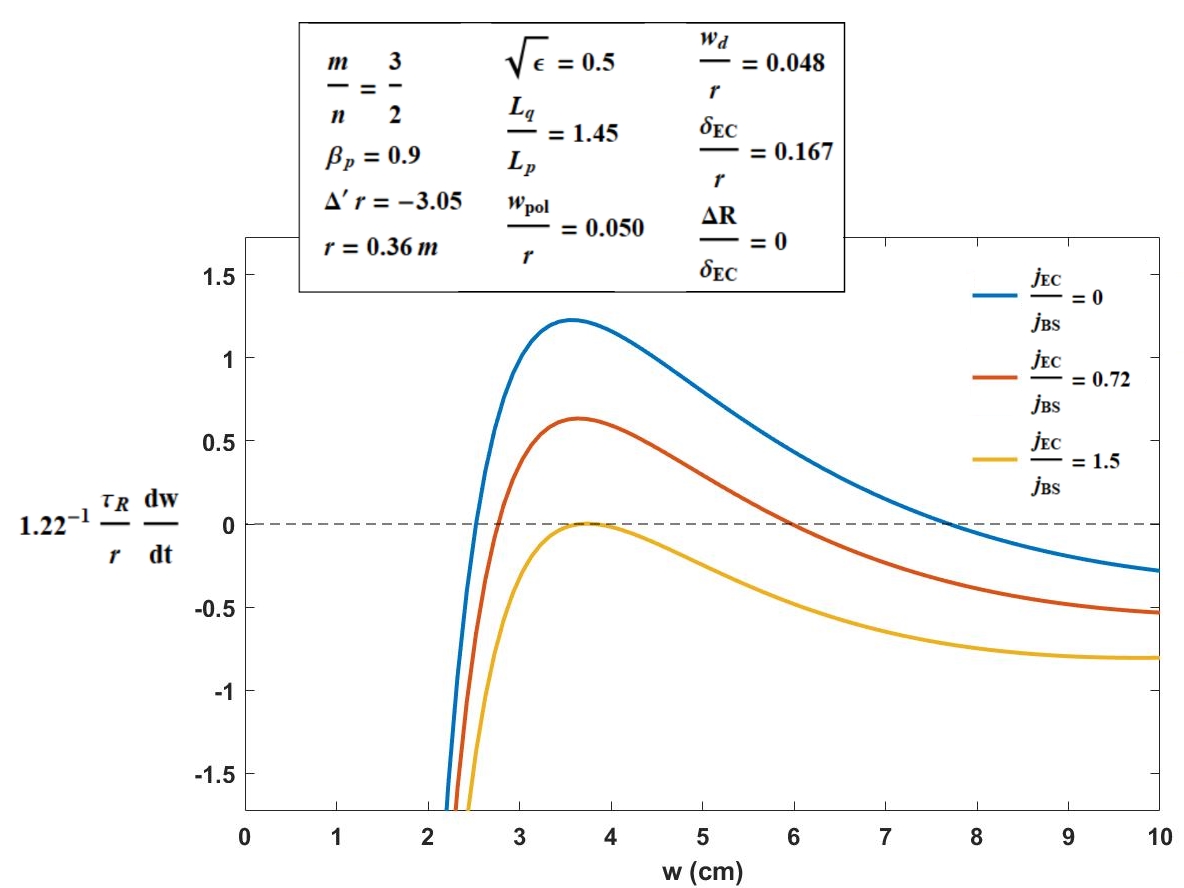My primary goal as a researcher is to pursue novel and impactful studies that will advance the understanding of magnetic confinement fusion towards widespread commercial application. Along these lines, I collaborate with private companies and publically-funded user facilities across the globe on a broad array of topics ranging from detailed physics experiments to whole-device modeling to the development and implmentation of control and optimization schemes.
More information on these projects can be found here:
-
As we get closer to the realization of fusion energy, engineering considerations will play larger and larger roles in the reality of fusion power plant design and operation. One of the major challenges in this space is the design and optimization of a fully-integrated demonstration device, which must be able... [Read More]
-
Exploring Negative Triangularity Configurations on the DIII-D Tokamak
As one of the most flexible and powerful tokamak facilities in the world, the DIII-D National Fusion Facility is a premier location for ground-breaking studies in magnetic fusion energy. In January and February of 2024, we completed an innovative month-long fusion research campaign on DIII-D utilizing a plasma configuration known... [Read More] -
Fusion Power Plant Design Using Negative Triangularity
The pursuit of commercial fusion energy, which could provide a clean and effectively limitless power source for humanity, is often heralded as one of the most important and difficult scientific endeavors of our time. One of the leading approaches for fusion, the tokamak, uses magnetic fields to confine a hot... [Read More] -
Vertical Stability Control on Tokamaks
Vertical stability is one of the central fundamental challenges for tokamak plasmas. While a toroidal plasma with a perfectly circular cross-section can be prevented from moving up or down by the inclusion of a small radial magnetic field (self-generated by the plasma current!), it is often desirable to stretch (or... [Read More] -
ELM-free Operating Scenarios for Tokamaks
The H-mode pedestal is an emergent phenomenon that occurs in tokamaks when the heating power is raised above a certain threshold. To first order it acts like a bucket, preventing fusion-relevant core plasmas from leaving the confined region. However, much like a bucket will eventually overflow if it continues to... [Read More] -
Microinstability Characterization in the Tokamak Edge
In tokamaks, a high confinement operational mode (H-mode) is reached when the plasma self-organizes to generate a narrow edge transport barrier called the pedestal. Velocity shear in this region tears apart turbulent eddies, allowing for the growth of pedestal gradients in a quiescent metastable state until explosive global events are... [Read More] -
Advanced Heating Control Schemes
Electron cyclotron current drive (ECCD) is not only a powerful heating source for tokamaks. By driving current in specific locations within the tokamak, dangerous magnetic islands, which can grow large enough to ultimately destroy the plasma confinement, can be suppressed. On the DIII-D tokamak, we developed several techniques to better... [Read More]

